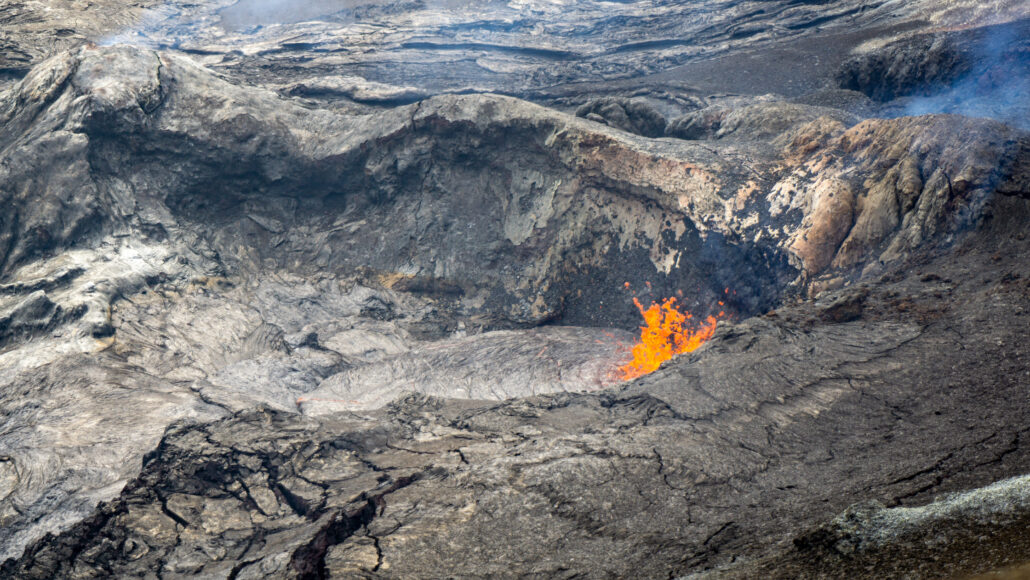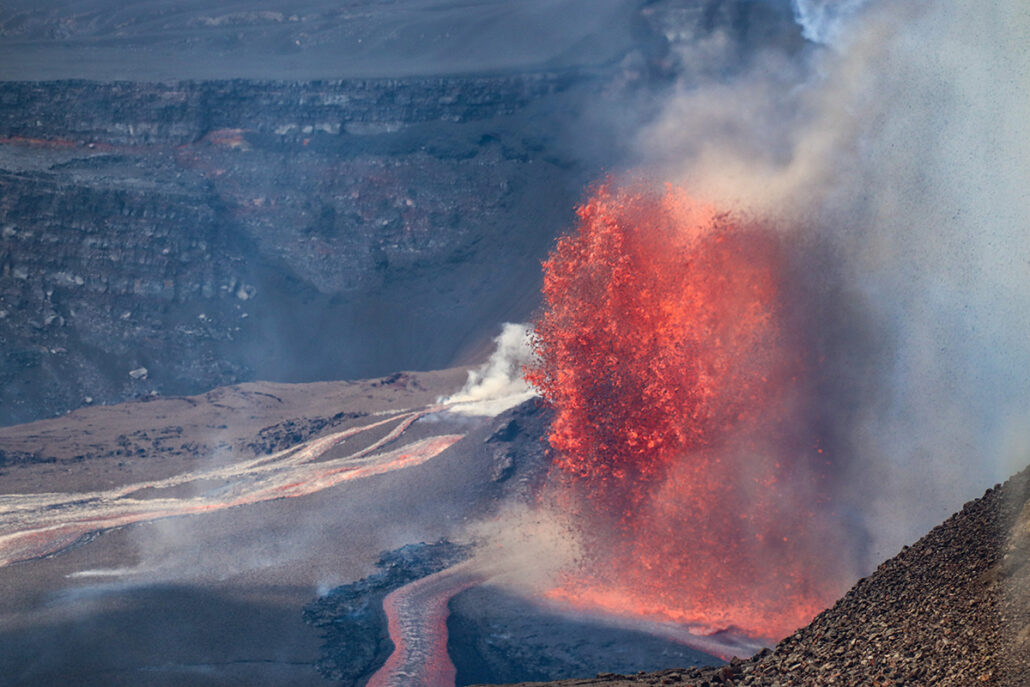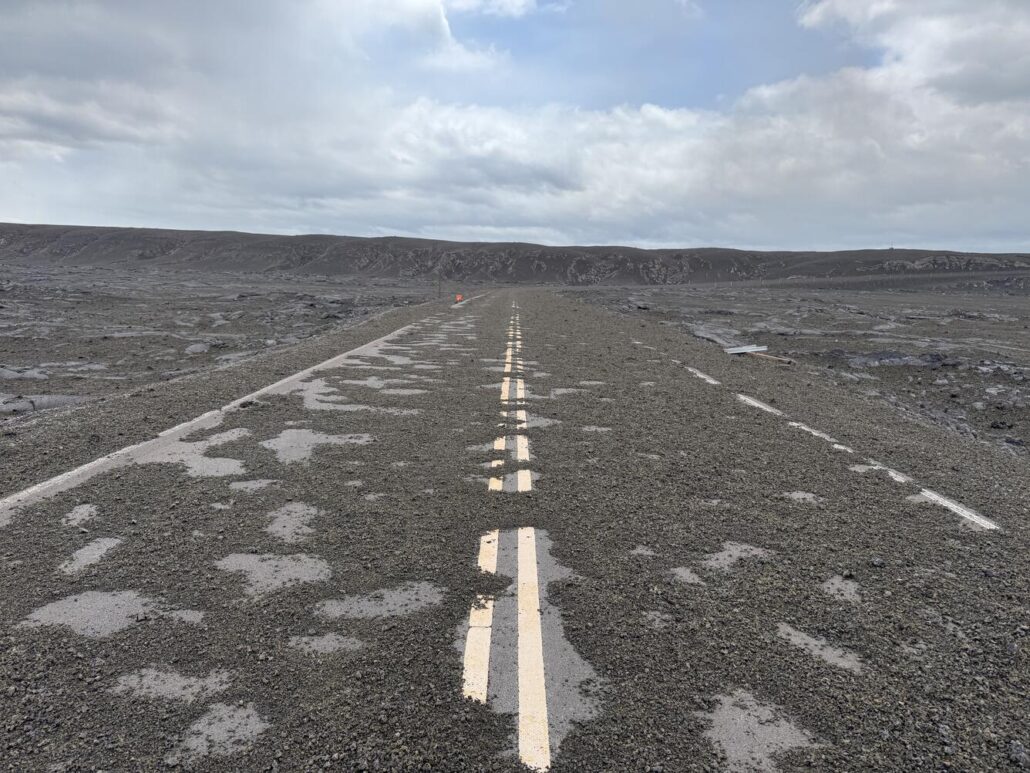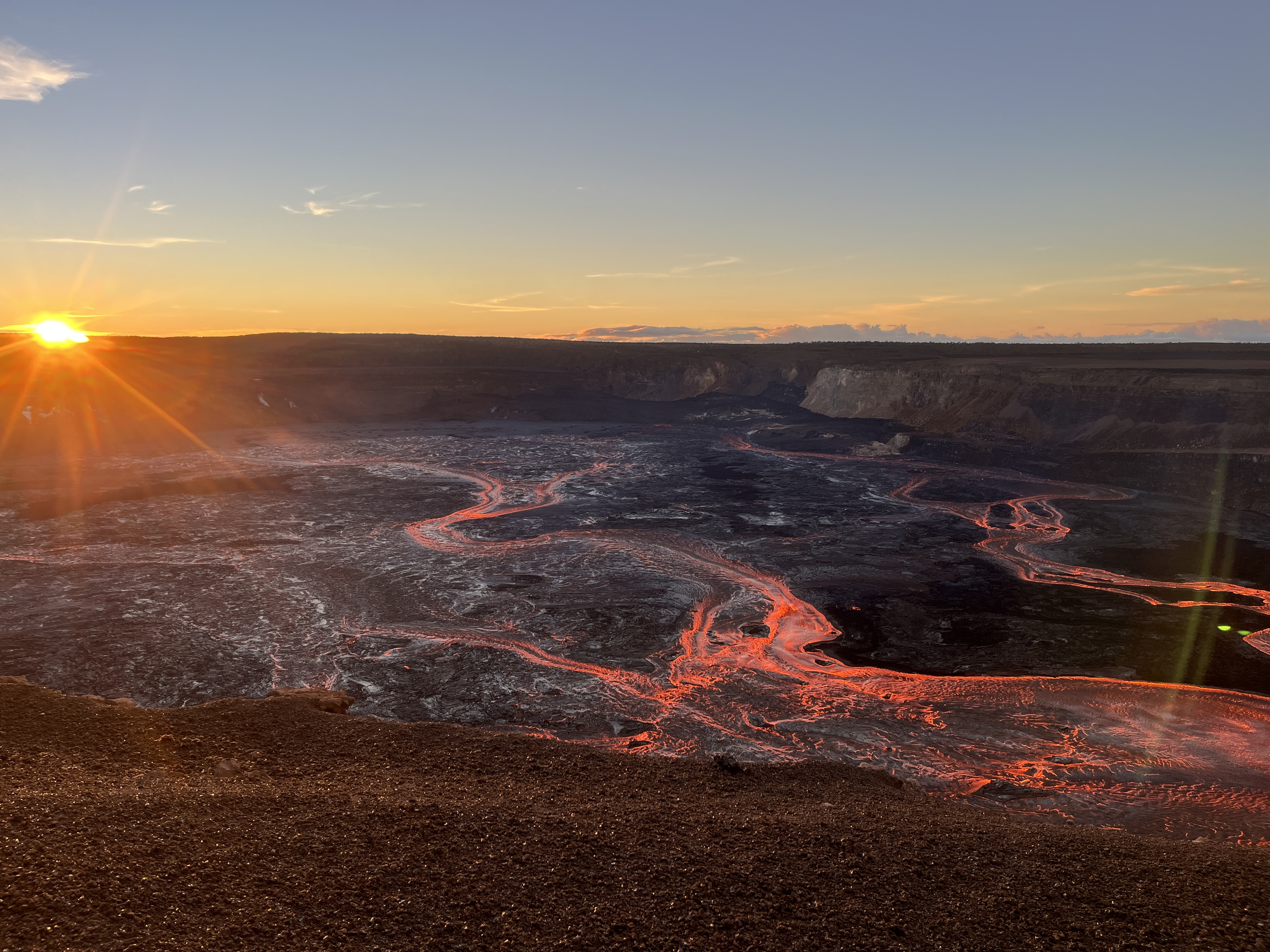We’ve always believed that there’s something magical (and humbling) about living in Hawaii — not least the way our land reminds us, in fiery spectacle and raw energy, of the forces shaping it. Right now, one of those forces—Kīlauea volcano—is roaring again in a display of nature’s power, and we want to share what we know: what is causing these eruptions, how safe things are for the public, what to expect, and all that makes Kīlauea so fascinating. If you’re curious or thinking of making plans to visit, this is for you.
Kīlauea on Fire: The Big Picture
Kīlauea, located in Hawai‘i Volcanoes National Park on the Big Island, is among the most active volcanoes on Earth. Its most recent eruptive phase began on December 23, 2024, with activity centered at its summit—specifically in the Halema‘uma‘u crater.
Since then, Kīlauea has erupted 32 times (so-called “episodes”) as of early September 2025, and the Hawaiian Volcano Observatory (HVO) anticipates that Episode 33, a new lava‑fountaining event, could begin very soon—today, or by Friday at the latest.

What’s Causing the Eruptions?
To understand why Kīlauea is doing what it’s doing now, here are the key geological and volcanic dynamics at play:
Magma supply and plumbing system
Underneath Kīlauea is a network of magma reservoirs and conduits that feed molten rock upward from deep in the Earth. When more magma moves in, pressure builds; when that pressure finds a path, eruptions follow.
Summit inflation/deflation cycles
Scientists monitor ground deformation—how the surface of the volcano swells or sinks—which indicates magma moving in or draining out. Before eruptive episodes, inflation tends to occur as magma accumulates; then, during the eruption, there is deflation as magma is expelled and flows settle.
Gas pistoning (“gas pistoning cycles”)
Recent reports (leading up to Episode 33) show that inside the vent in Halema‘uma‘u, the magma column is rising and falling in cycles—gas pistoning. This happens when gases trapped in the magma build up, expand, and then release, driving bursts of activity: overflows, small spatter fountains, etc. These are precursors to larger lava‑fountaining episodes.
Vent structure and crater dynamics
The current activity is largely from vents within Halema‘uma‘u (named the north and south vents, plus sometimes a central vent) on the summit crater. These vents have been doing fountaining episodes that vary in height and duration. The configuration of the crater (its walls, floor, vent positions) influences how lava and gas behave, how far fountains go, where overflows might happen, etc.
Cyclic behavior / episodic eruptions
What’s happening now is characteristic of an episodic eruption: periods of active lava fountaining and flows interspersed with pauses (where activity quiets, vents drain or cool, magma recharges). So far, since late 2024, this eruptive‑summit behavior has had dozens of such episodes.

Current State & What to Expect with Episode 33
Here’s the latest as of mid‑September 2025:
- The magma column in the vent has been showing gas pistoning cycles overnight, which is one of the usual lead‑ups to a lava fountain episode.
- Some overflows have already been happening from the vent onto the western crater floor, plus spattering from gas bursts outside the vent cone. These smaller precursory events often precede the bigger show.
- Inflation at the summit (ground swelling) has been recorded via tiltmeters; such deformation signals magma buildup.
- Sulfur dioxide (SO₂) emissions and other volcanic gases are elevated, especially during the pauses between episodes, often rising and falling with gas pistoning.
So Episode 33 is believed to be very likely to begin in the next day or so (or within 1‑4 days, according to HVO), unless something changes.
During an episode, lava fountains can shoot crystal hot molten rock dozens, if not hundreds, of feet into the air, the surface of the crater floor becomes active with flows and glowing lava, and the spectacle can last anywhere from several hours to days. Following the episode, things quiet down again.

Safety, Public Access, and What’s Protected
One of the first things people want to know: Is this dangerous? Do people or homes need to worry?
Here’s what the evidence and official reports say:
- The eruptions to date (all 32 episodes) have been fully contained within the summit crater (Halemaʻumaʻu) of Kīlauea, inside Hawai‘i Volcanoes National Park. That means lava flows, fountaining, overflows—everything occurring has stayed within the crater’s boundaries; no lava has threatened residential areas or infrastructure outside the park.
- The area of activity is in a closed zone within the park, meaning certain trails, roads, and overlooks near the crater are closed to public entry for safety. Park Service and HVO clearly mark which parts are off‑limits.
- Hazards exist, but they tend to be ones more typical of volcanoes in eruption rather than lava flowing across towns. These include volcanic gases—especially sulfur dioxide—which can create vog (volcanic smog), which can affect air quality, especially downwind. Also, “Pele’s hair” (strands of volcanic glass) and other fine volcanic debris can be wafted by wind, and those can irritate skin, eyes, or respiratory systems.
- Visitors are advised to check current alerts, use webcams, abide by Park instructions, avoid closed areas, wear protective gear if needed (especially regarding gas or fine particles), and be mindful of paths of visibility and wind direction.
So in short: for most people, especially those outside the immediate park areas around Halema‘uma‘u crater, the risk is very low. The spectacle is visible from many safe overlooks; the lava is not threatening homes or infrastructure.

Why People Are Watching & Why It Matters
Beyond the safety and geology, why do we care so much—and why should you, whether a visitor or someone who loves this place?
A rare, spectacular show: Lava fountains aren’t everyday occurrences, even for a volcano as active as Kīlauea. Episodes of sustained high fountains are memorable—both geologically and visually. For many people, seeing a lava fountain from Halema‘uma‘u is a bucket‑list adventure.
Cultural significance: Kīlauea is more than a geological feature—it is deeply sacred in Hawaiian culture. Halema‘uma‘u is traditionally known as the home of Pele, the goddess of fire and creation. The volcanic activity is part of ongoing stories, traditions, chants, and identity for Native Hawaiians.
Science in action: What we’re seeing now is of great interest to volcanologists. The episodic nature, the patterns of inflation/deflation, the gas pistoning—all of these help us understand magma behavior, predict future eruptions (or pauses), and refine hazard models.
Tourism, economy, inspiration: Eruptions often draw visitors, photographers, hikers, and those who come to simply witness something primordial and powerful. That has economic impact—and reminds us all of Hawaii’s wild beauty, its power to awe. At the same time, there is responsibility: in managing crowds, access, infrastructure, and safety.

Practical Tips: If You’re Thinking of Going to See It
If you plan a visit to see Kīlauea in action:
Check the latest updates: Before you go, check the U.S. Geological Survey’s Hawaiian Volcano Observatory pages and the National Park Service’s alerts. Things change fast.
View from safe overlooks: Use official viewing areas. There are overlooks and viewpoints designated in Hawaiʻi Volcanoes National Park that offer views of Halema‘uma‘u’s summit crater. Stay within the designated trails and roads.
Watch for air quality issues: Volcanic gas and vog can drift. Sensitive people—young children, those with respiratory issues—should take precautions. Sometimes it’s better to view from farther away, depending on the wind.
Go at off‑peak times: Many people try to see eruptions at dusk or after dark when the glow is most dramatic. Also, weekdays or early morning/late evening tend to be less crowded. Parking can fill up early.
Bring essentials: water, appropriate footwear, a hat, and consider goggles or a mask if you think gas or ash might be present. Also, something to light your way if you’ll be out after dark.
Reflecting on the Power of Nature — and Our Place Here
Living here means always being reminded that we’re part of something far larger, far older. Kīlauea’s roar is a reminder that land is living, evolving, and that the ground beneath us shifts (both literally and in meaning).
Every lava fountain, every gas plume, every glow in the crater bottom isn’t just dramatic scenery—it’s part of Hawaii’s ongoing story. It’s what built the islands. It shapes the land, the soil, the contours of the coast. It teaches us humility, reverence, and wonder.
It also reinforces something very practical: stewardship. Respecting closures, Hawaiian traditions, and the land’s power, while ensuring safety and living in harmony with nature’s vitality as a partner rather than a hazard.
